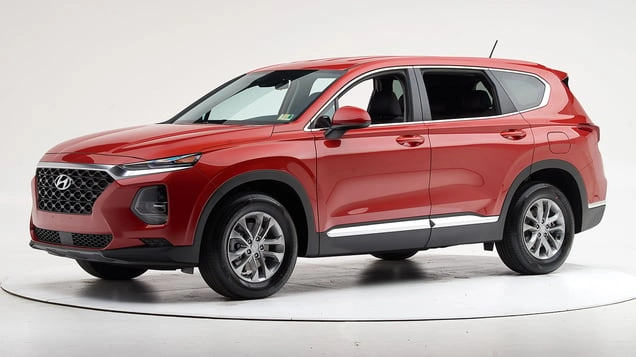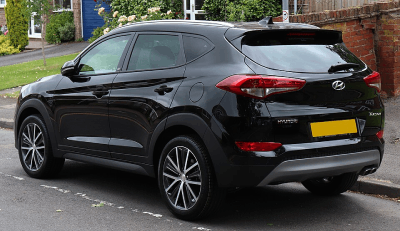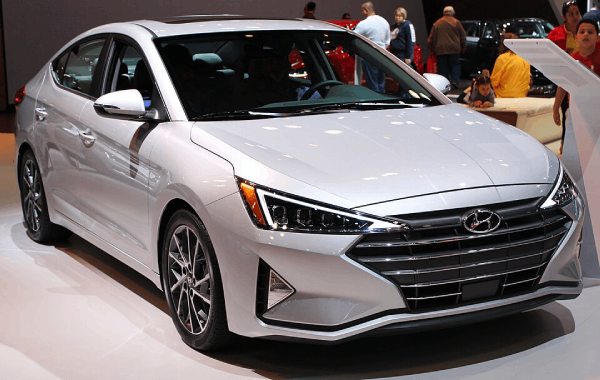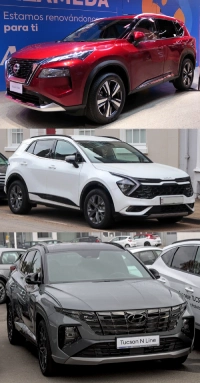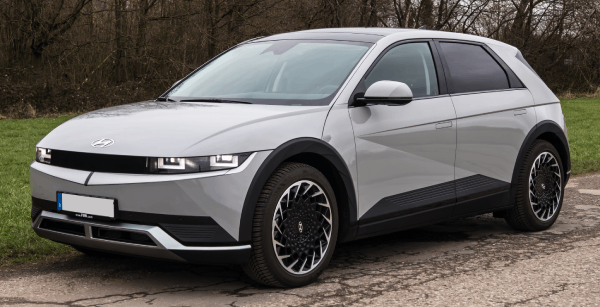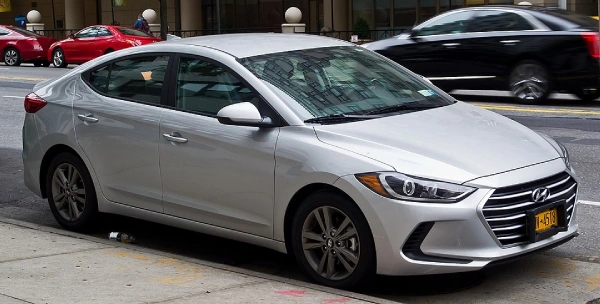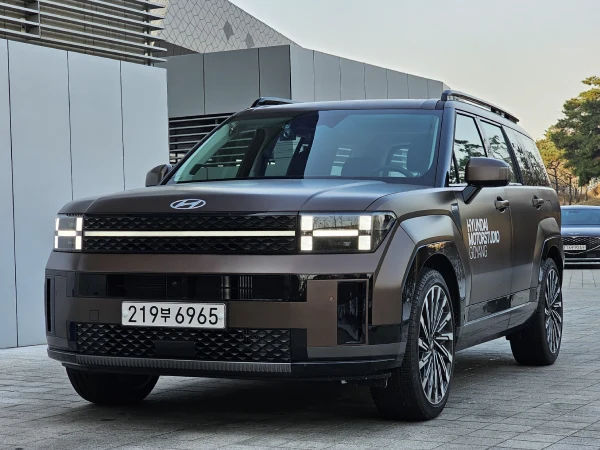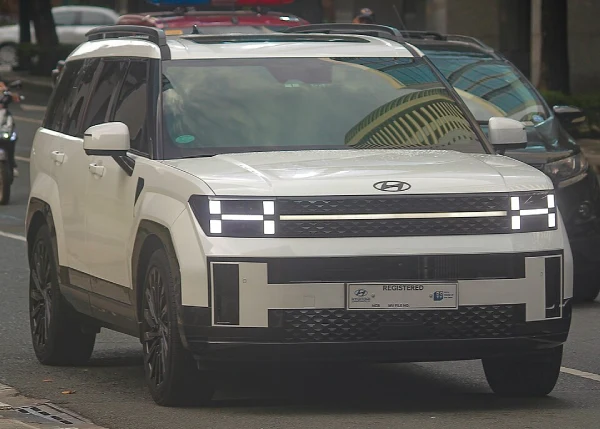Pros and Cons of the 2020 Hyundai Santa Fe
Pros
- 🛋️ Quiet Interior
- 🚀 Turbocharged Engine
- 🎨 Bold Styling
- ⭐ Impressive Features
- 🛡️ Even More Impressive Standard Warranty
Cons
- 🔋 Weak Standard Engine
- 🏭 Some Interior Hard Plastics
- ⛽ So-So Fuel Economy
- 💰 No Longer Has a Pricing Advantage Over the Competition
General Overview
Originating from last year’s model revision, the 2020 Hyundai Santa Fe enters the new model year unaltered. With us, though, that’s quite okay. The cabin of this most recent-generation Santa Fe feels and looks better. As is Hyundai’s norm, it comes filled with basic features, many of which are an extra expense for its rivals.
Cabin Comfort and Space
On the downside, the cabin’s quietness and roominess somewhat limit total cargo capacity. The Santa Fe’s basic powertrain likewise fails to inspire us. It has enough passing power for the interstate and will cover the town. However, you have to be aggressive and lay on the pedal if you have to call upon all of the Santa Fe’s reserves.
Engine Options
To get the optional, more potent turbo engine, one must jump a few trim levels—and several thousand dollars. Still, the Santa Fe does a great job overall in juggling most compact SUVs’ demands. The journey is comfortable, the inside is spacious, and everyone can remain in touch with enough technology.
Competing Models
If you require anything bigger, consider a three-row SUV like the Hyundai Palisade or Kia Telluride. Nevertheless, you will want the Santa Fe on your short list if you are seeking good value among two-row SUVs.
Overall Impression
The 2020 Hyundai Santa Fe is a car that has just found its own. Once a second-string player in a field of greats, the Santa Fe is today one of the most impressive compact-crossover SUVs loaded with amenities, power, and style, as well as one of the greatest basic warranties in the company.
Cargo Capacity
Though still outsized by the Honda CR-V’s huge 39.2-cubic-foot storage bay, the 2-row/5-passenger Santa Fe looks bigger than most compacts, with greater passenger and cargo volume than a Nissan Murano or Chevrolet Equinox.
Performance and Powertrain
From its possible 235-horsepower turbocharged engine to its smart interior and near-luxury levels of equipment, the 2020 Hyundai Santa Fe surprises with its competitive pricing, good resale, and high safety ratings.
Trim Levels and Features
| Model | Original MSRP | KBB Fair Purchase Price (National Avg.) |
|---|---|---|
| SE Sport Utility 4D | $27,450 | $16,664 |
| 2.4 SEL Sport Utility 4D | $29,200 | $17,359 |
| 2.0T SEL Sport Utility 4D | $36,050 | $19,135 |
| 2.4 Limited Sport Utility 4D | $37,200 | $19,268 |
| 2.0T Limited Sport Utility 4D | $39,050 | $19,886 |
Which model fits me the best?
2020 Santa Fe SE
- Forward Collision Avoidance
- Lane Keeping Assist
- Intelligent Cruise Control
- Wheel Size: 17-inch Alloy
2020 Santa Fe SEL
- Heated Front Seats
- 8-Way Motorized Driver Seat
- Blind Spot Avoidance
- Proximity Key with Push-Button Start
2020 Hyundai Santa Fe Limited
- 2.4 Surround View
- Rain-Sensing Wipers
- Heated Steering Wheel
- Ventilated Front Seats
Driving Dynamics
Thanks to numerous insulating methods like laminated side glass, the 2020 Hyundai Santa Fe SUV is quite quiet in motion—even at highway speeds. Powered by the standard 2.4-liter engine, achieving those speeds can be slow, but with the 2.0-liter turbo, there’s ample power for passing and merging.
Transmission and Efficiency
A masterwork of engineering, the Santa Fe’s 8-speed automatic provides precise and flawless shifts exactly when needed. Though it aligns with the Ford Edge and Nissan Murano, the extra ratios do not significantly improve fuel efficiency, which is not quite as competitive as rivals like the Honda CR-V and all-wheel-drive Subaru Forester.
Driving Modes
Though equipped with the optional all-wheel drive (AWD), the Santa Fe primarily functions as a front-drive (FWD) SUV. The dash display revealed power transferring to the rear wheels only when conditions were slippery or when the throttle was applied firmly during our test drive.
Steering and Handling
We were impressed by the Santa Fe’s electric power steering, which provides a natural feel with good input when the road curves. Three degrees of intervention in conventional lane-keeping assist help the driver choose desired assistance levels.
Ride Quality
The Santa Fe’s ride is smooth and controlled over even pavement; yet, it maintains tranquility within the cabin on unpaved washboard roads.
Interior Comfort 2020 Hyundai Santa Fe
Except for some rough plastic, the interior of the new Santa Fe is attractive and comfortable, featuring a distinctive T-shirt-like material for the headliner and A-pillars. The instrument panel has a layered 3-level design, and the seats are supportive, using foam of varying densities.
Passenger Space
There is plenty of legroom, enough for a 6-foot-4-inch passenger to sit comfortably behind a driver of the same height. Headroom is generous, especially with the optional panoramic sunroof fitted.
Safety Features
Many safety technologies have buttons arranged to the left of the tilt-and-telescope steering wheel, and all Santa Fe switches and controls operate precisely. Hyundai has positioned the navigation screen for low glare, and the electric rear liftgate can be operated with a foot swipe.
Exterior Design 2020 Hyundai Santa Fe
Hyundai’s 2020 Santa Fe small-crossover SUV looks appealing from all sides, with a front dominated by the new cascading grille. The thin-slit, high-mounted LED daytime running lights resemble the earlier Jeep Cherokee, while the actual headlights are positioned lower for expected illumination.
Visibility and Aesthetics
From the side, the Santa Fe features a character line that spans from headlights to taillights, enhancing outward visibility. Satin-finish trim surrounds the side windows, and the rear directional signals are positioned low at bumper level.
Wheel Options
The appearance is enhanced with optional 19-inch aluminum-alloy wheels, adding to the overall aesthetic appeal.
HTRAC AWD System
Hyundai terms its all-wheel-drive technology “HTRAC.” This system moves torque between the front and back axles as needed using an electronic center coupling. It includes three different drive modes—Normal, Sport, and Smart—as well as side-to-side torque vectoring for improved handling.
Innovative Features
BLIND View Monitor
Only found on the Limited trim, this innovative feature should be standard on every vehicle. A monitor in the instrument cluster shows an image of the right or left lane beside the car when the driver activates the turn signal, helping to prevent collisions with items in the blind spot.
Standard Safety Features
The 2020 Santa Fe is equipped with forward-collision assist (with pedestrian protection), lane-keeping assist, smart cruise control with auto stop/go, high-beam assist, and a driver-attention warning system.
Infotainment and Connectivity
Standard features include a 7-inch touchscreen with Apple CarPlay and Android Auto, Bluetooth, and USB power connections. The SEL adds a blind-spot monitor, rear cross-traffic warning, and more.
Optional Packages
The HTRAC AWD system highlights a lengthy list of options for a modest $1,700. Other major choices include the 2.0-liter turbocharged engine and various feature packages.
Engine and Transmission Options 2020 Hyundai Santa Fe
Santa Fe consumers can choose between two familiar 4-cylinder engines: a naturally aspirated 2.4-liter four with 180 horsepower and a turbocharged 2.0-liter engine with 235 horsepower. Both engines benefit from a new electric variable-valve-timing system.
Fuel Economy 2020 Hyundai Santa Fe
- 2.4-liter inline-4: 21/27 mpg (AWD), 22/29 mpg (FWD)
- 2.0-liter turbocharged inline-4: 20/27 mpg (FWD), 20/26 mpg (AWD)
The 2020 Hyundai Santa Fe offers a balanced mix of comfort, performance, and technology, making it a strong contender in the compact SUV market.
